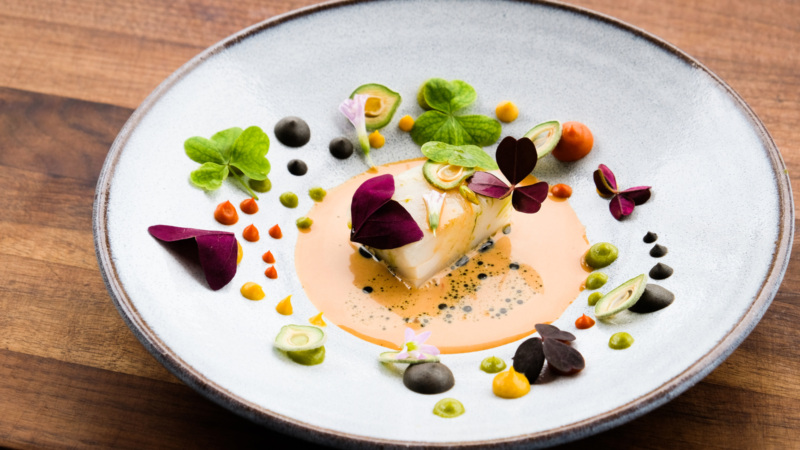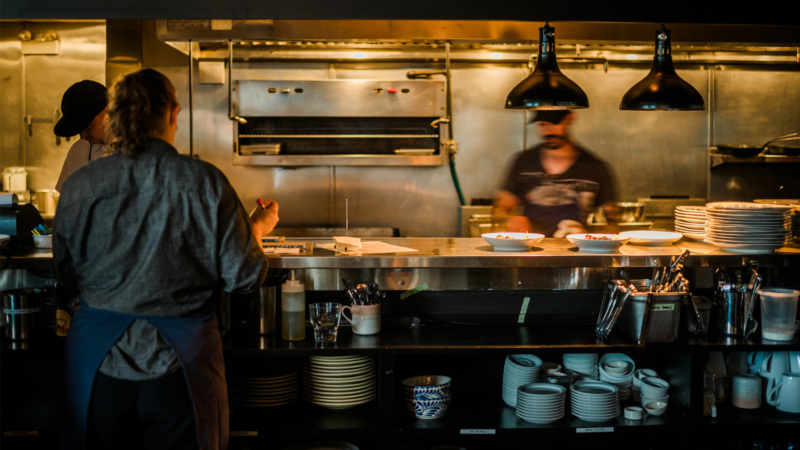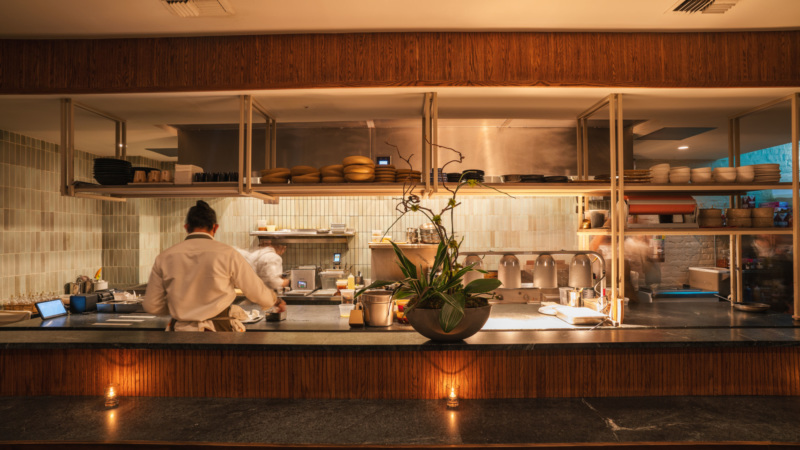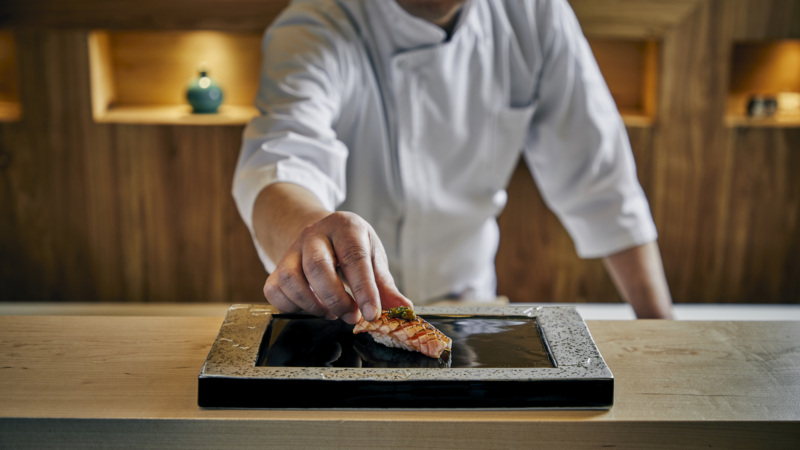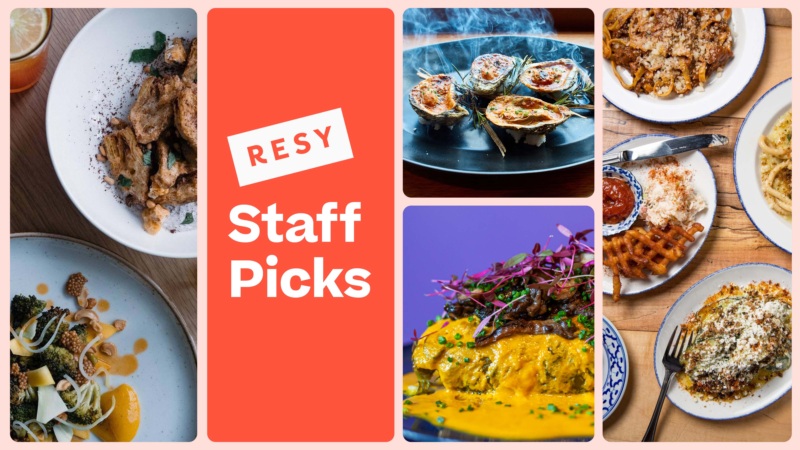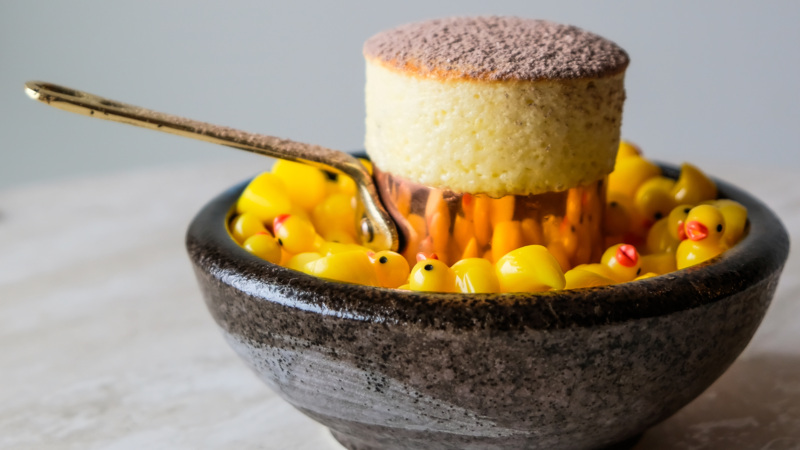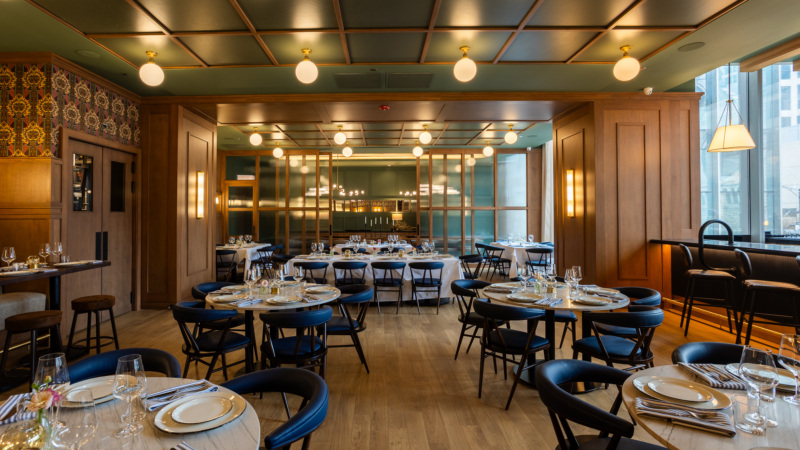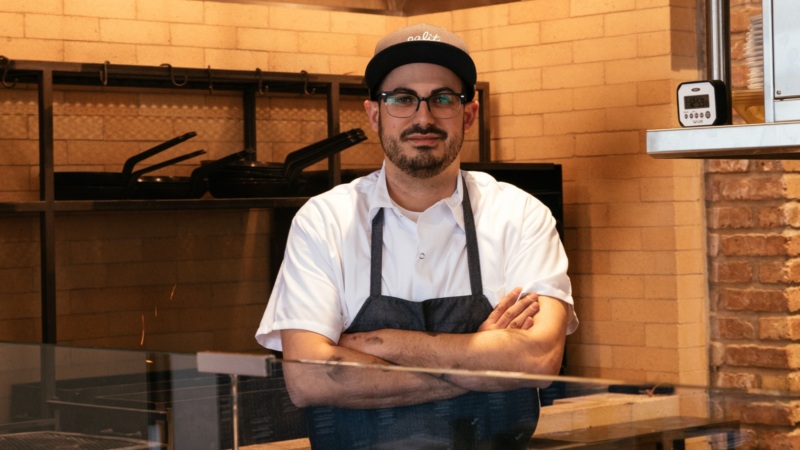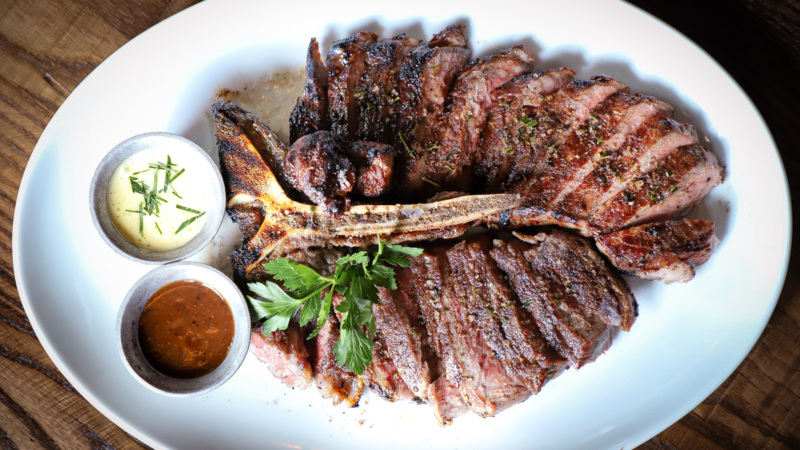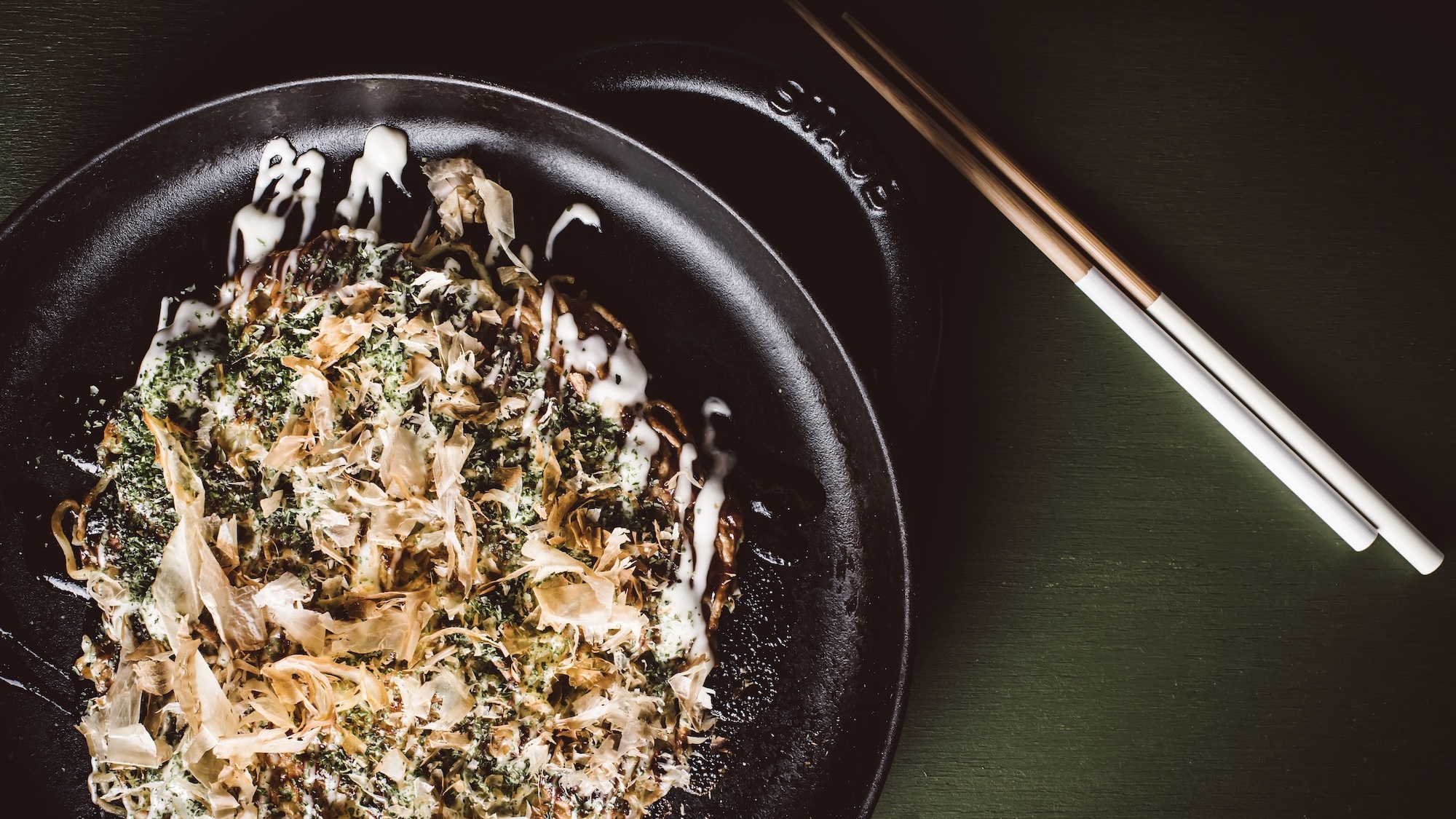
The Japanese and Midwestern Roots of Paul Virant’s Gaijin, in Six Dishes
A sultry slip of a restaurant beneath the El tracks in the bustling West Loop, Gaijin is chef and owner Paul Virant’s (Vie, Vistro Prime, Jar Sessions) love letter to okonomiyaki — the savory griddled Japanese pancakes layered with meat and vegetables, and strewn with flavorful sauces. The name Gaijin translates to foreigner, and aptly describes Virant’s take on this Osaka-born comfort food dish. His wife fell in love with okonomiyaki while living in Japan as a student, and the chef spent some 25 years perfecting home-cooked iterations of both Osaka- and Hiroshima-born versions, through his seasonal Midwestern lens.
“We try to give people an authentic okonomiyaki experience. I did a lot of research, a lot of traveling and asking questions to try to get it right,” Virant says. “The whole concept, for me, is a new form of inspiration.”
Of course, okonomiyaki isn’t all there is to love at Gaijin. From savory pancakes to expert pickled vegetable snacks, noodle bowls that hug you with their warmth, and fluffy shaved ice desserts, we present the six dishes that best say “Gaijin.”
Twice-cooked garlic
The first dish in the shared-plates section, this unassuming snack comprises a small bowl of browned whole garlic cloves next to a small pile of senbei (seasoned rice crackers). It began as an homage — in this case to a deep-fried whole head of garlic served with chile oil, as a gyoza condiment at a restaurant Virant once visited in Tokyo. In Gaijin’s version, more “user-friendly” loose cloves are roasted and deep-fried, then tossed in rayu (Japanese chile oil) and shoyu (Japanese-style soy sauce). “It gives it that caramelized sweetness, but of course it’s also very savory, with a lot of umami,” Virant says. Smeared on the airy senbei crackers, it goes down especially well with a Toki whisky highball. And if you don’t finish it, it’s an excellent complement to your eventual yakisoba order.
Pork yakisoba
A mostly traditional take on this comforting Japanese noodle stir fry, Gaijin starts with Tokyo-style ramen noodles from Honolulu-based Sun Noodle, which are boiled then promptly — and we mean promptly — tossed onto a sesame oil-slicked griddle. Slow-roasted local pork belly cubes join the noodles, along with an aromatic mix of garlic, scallions, and cabbage, plus marinated carrots that “add a little zing to a pretty rich dish,” Virant says. The hearty melange is seasoned with a slick of savory yakisoba sauce from century-old Japanese sauce-maker Otafuku.
Osaka-style okonomiyaki with beef neck
The dish that started it all, Gaijin’s Osaka-style okonomiyaki (in which components are all mixed together) starts with a batter consisting of dashi, flour, egg and the mountain yam known as nagaimo. It’s griddled with bonito flakes, sprouts, cabbage and scallions, and topped with everything from tempura shrimp to octopus, before it’s squiggled with kewpie mayo and Otafuku okonomiyaki sauce.
One of Virant’s favorite add-ons is the beef neck. Prepared like a pot roast, Illinois Angus beef neck is roasted slowly with mirepoix and confited garlic, picked, then simmered again in the reduced braising liquid before getting heaped onto the pancake with shimmying bonito flakes atop. “It all goes back to this idea that we wanted to be very authentic with okonomiyaki as gaijins, but also as gaijins we wanted to provide that Americana influence.” It doesn’t get more American, or Midwestern, than pot roast.
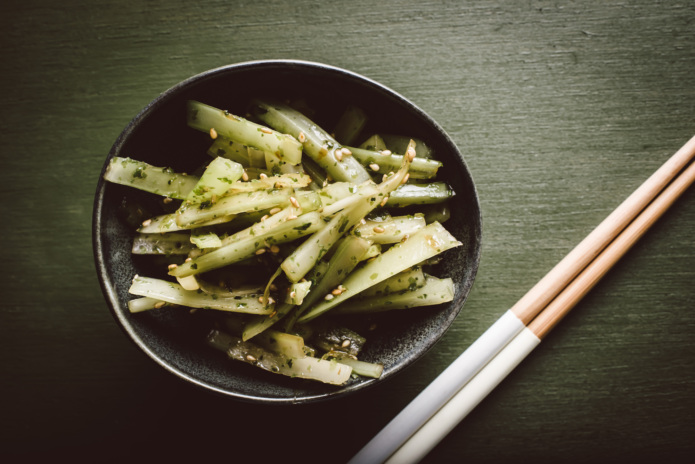
Kombu marinated vegetables
This simple starter, which — like the garlic — should live on your table throughout your meal as a complement, nods to the kombu celery snack at Bar Goto in New York City. Yet perhaps no dish at Gaijin better encapsulates Virant’s veg prowess (he also created artisanal pickle company Jar Sessions). He starts by fermenting green beans with sea kelp, then thinly shaves raw local radishes. The more labor-intensive celery is washed, peeled, cut into batonnets and salt-brined for 30 minutes, before he mixes all three vegetables together with tamari, sesame oil, nori and sesame seeds. “The different preparations provide an experience,” he says. “And that dish, with a lager, is the perfect bar snack.”
Traditional Hiroshima-style okonomiyaki
Versus the mixed-together Osaka version, the layered Hiroshima-style okonomiyaki was born of necessity, after the U.S. dropped a nuclear bomb that destroyed the city during World War II. “They needed something to feed the people that was pretty inexpensive and nutritious,” Virant says. “They adopted okonomiyaki from the Kansai region, and bumped it up with some noodles, for a more substantial filling, and healthy protein with an egg.”
At Gaijin, a savory crepe made from all-purpose flour and rice vinegar is covered with bacon (or yuba, aka tofu skin, in the vegetarian version), cooked, then flipped before bonito flakes and sprouts go on “to mimic the flavor of dashi, an essential ingredient,” Virant says. A layer of noodles stir-fried in sesame oil and yakisoba sauce is piled on top before an egg gets cracked over top and the pancake is flipped again to steam the egg. It’s strewn with sauces, then garnished with more dancing bonito flakes — like comfort food that waves back.
Kakigori
In its traditional form, this whimsical Japanese shaved-ice dessert with a confoundingly feathery texture is drizzled with green tea syrup and topped with red bean paste or sweetened condensed milk. Gaijin’s original sesame yuzu flavor, still on the menu, is as sweet, refreshing and nutty as day one — featuring yuzu syrup, black sesame ice cream, sesame brittle and strawberry compote. To keep up with dizzying demand for these bulbous treats, the restaurant recently brought back OG pastry chef Angelyne Canicosa to dream up new flavors (think orange creamsicle ice cream, rhubarb syrup, rhubarb beer jam and house sprinkles), and invested in a second kakigori machine.
“There’s not anywhere, I think, in Chicago doing kakigori and mochi donuts (chewy glazed rice-flour donuts),” Virant says. “So it’s pretty amazing to have a concept where you can say you have three distinct offerings that are very hard to find.”
Maggie Hennessy is a Chicago-based freelance food and drink journalist, and the former restaurant critic for Time Out Chicago. Her work has appeared in such publications as Bon Appetit, Food & Wine, Taste, Eater and Food52. Follow her on Instagram and Twitter. Follow Resy, too.

